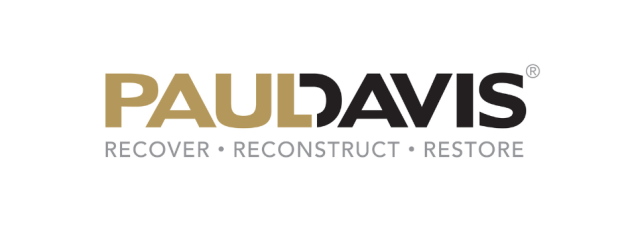Paul Davis, IAIP Platinum Corporate Partner
Do you know that water losses could turn into mold claims? Are you well equipped to deal with the complexities of water loss and efficiently help your customers?
Paul Davis is your most suitable partner when one of your insureds experiences water damage from floods, leaks, or plumbing failures. Our skilled technicians can efficiently and effectively remove excess moisture from building materials using our state-of-the-art technology to bring the affected structure to a pre-damage condition.
Key Components of ASD
- Assessment: We use moisture meters, infrared cameras, and other tools to determine the moisture levels in various building materials, including drywall, wood, insulation, and flooring.
- Water Extraction: We use pumps, wet/dry vacuums, or other water extraction equipment to remove standing water promptly.
- Controlled Demolition: We sometimes remove damaged materials like wet drywall or insulation to address moisture trapped within wall cavities or under flooring.
- Evaporation: We use air movers to help circulate air and dehumidifiers to remove excess moisture from the air.
- Monitoring: We monitor moisture levels using various tools to track progress and make necessary adjustments.
- Rebuilding: We replace damaged drywall, insulation, flooring, or other building materials when moisture levels return to normal.
- Documentation: We document each step of the process to track progress and show the restoration was successful.
Here are several ways in which applied structural drying benefits the environment:
- Reduced waste: By drying and salvaging water-damaged materials, applied structural drying can often prevent the need for extensive demolition and replacement. This reduces the amount of construction debris, including wood, drywall, and insulation, that would otherwise end up in landfills. Minimizing waste contributes to the conservation of landfill space and reduces the energy required for disposal.
- Energy efficiency: Applied structural drying involves the use of specialized equipment like dehumidifiers and air movers to remove moisture from affected areas. These machines are designed to operate efficiently, consuming relatively low amounts of energy compared to more invasive restoration methods that might require extensive reconstruction. This results in lower energy consumption and, subsequently, reduced greenhouse gas emissions associated with energy production.
- Preservation of resources: By salvaging and restoring items, the restoration process contributes to the conservation of resources that would have been used to replace them.
- Preventing mold growth: Rapid and efficient drying techniques used in applied structural drying help prevent the growth of mold and mildew. Mold remediation, which becomes necessary if mold takes hold, can involve the use of chemicals and biocides that can be harmful to the environment. By avoiding mold growth, the need for these potentially harmful substances is reduced.
- Reduced transportation impact: Traditional restoration methods that involve extensive demolition and replacement often require the transportation of new materials to the site. This involves the consumption of fossil fuels and the release of greenhouse gases. Applied structural drying, by contrast, minimizes the need for these transportation-related environmental impacts.
- Lower carbon footprint: Because applied structural drying is a faster and less resource-intensive process, it generally results in a lower overall carbon footprint compared to traditional restoration methods. This is particularly important in the context of climate change, as reducing carbon emissions is crucial for mitigating its effects.
Paul Davis Restoration is passionate about making a positive difference for our customers while providing safety and certainty in the communities we serve.
If you have a claim or want to refer a loss, contact us here 888-473-7669.
To establish a priority partnership that focuses on speed, service, and capabilities, contact Heather Bradley IAIP Region III Marketing Director and Assistant Vice President of Business Development at Paul Davis Restoration, Inc. to get started.
